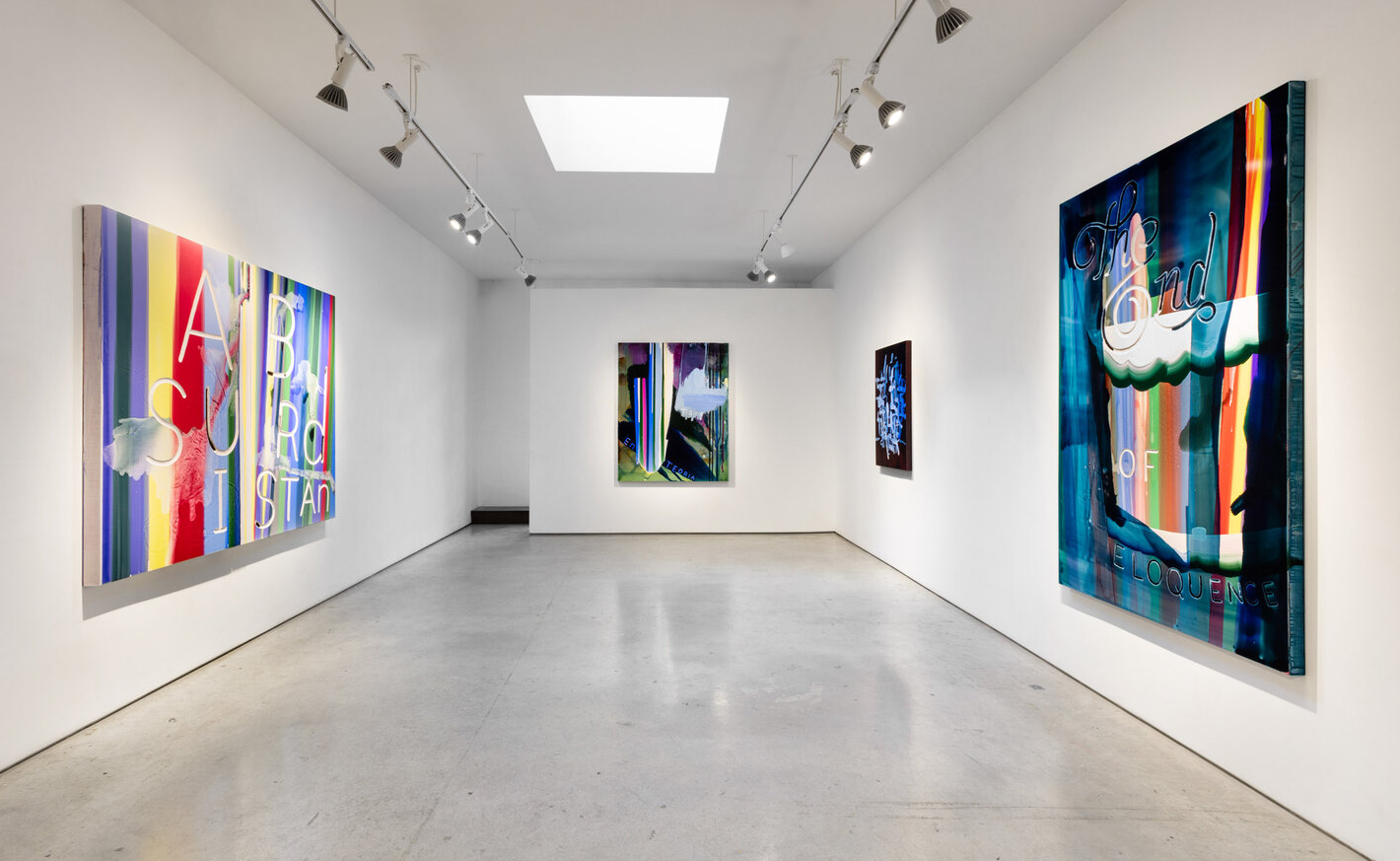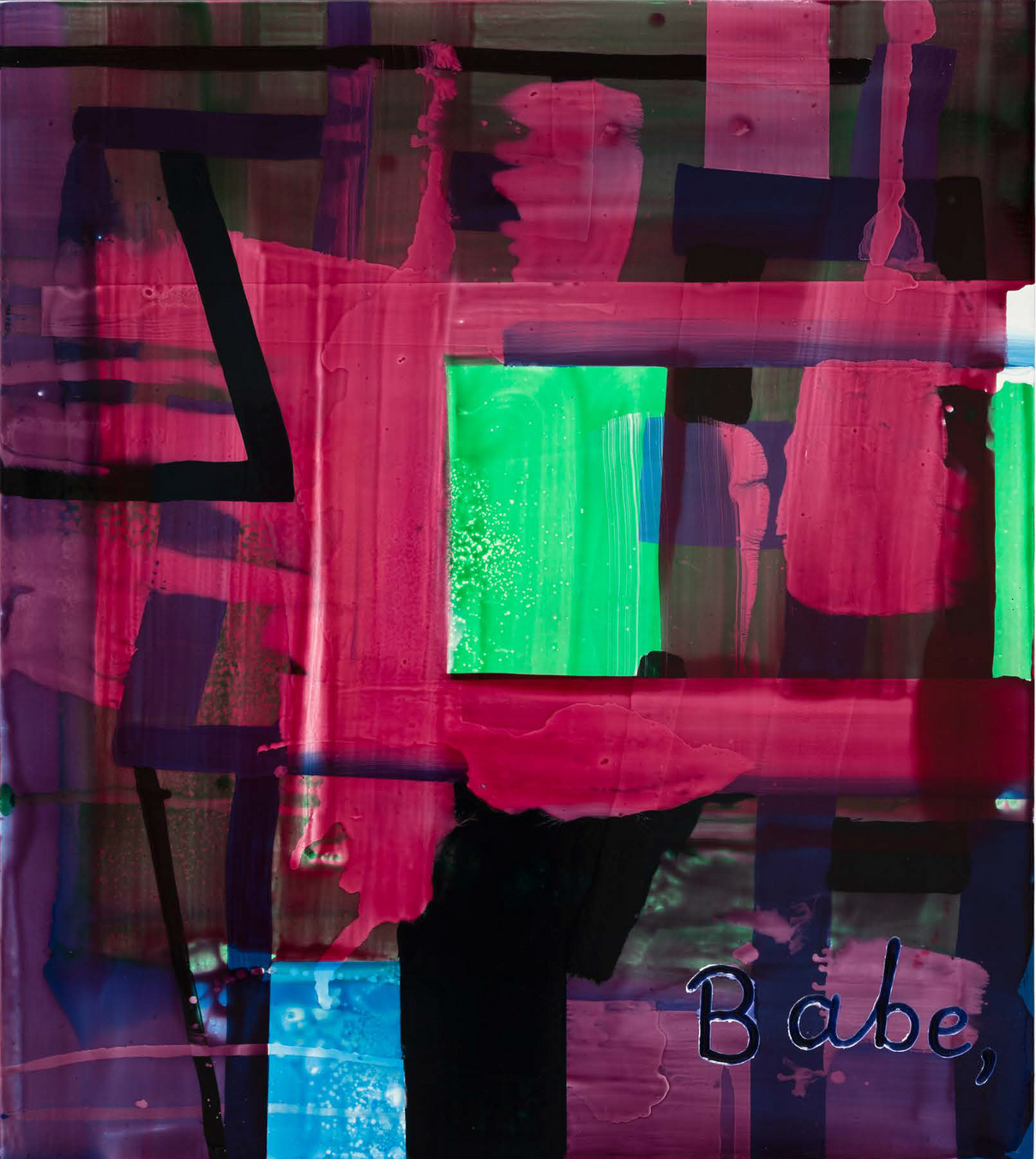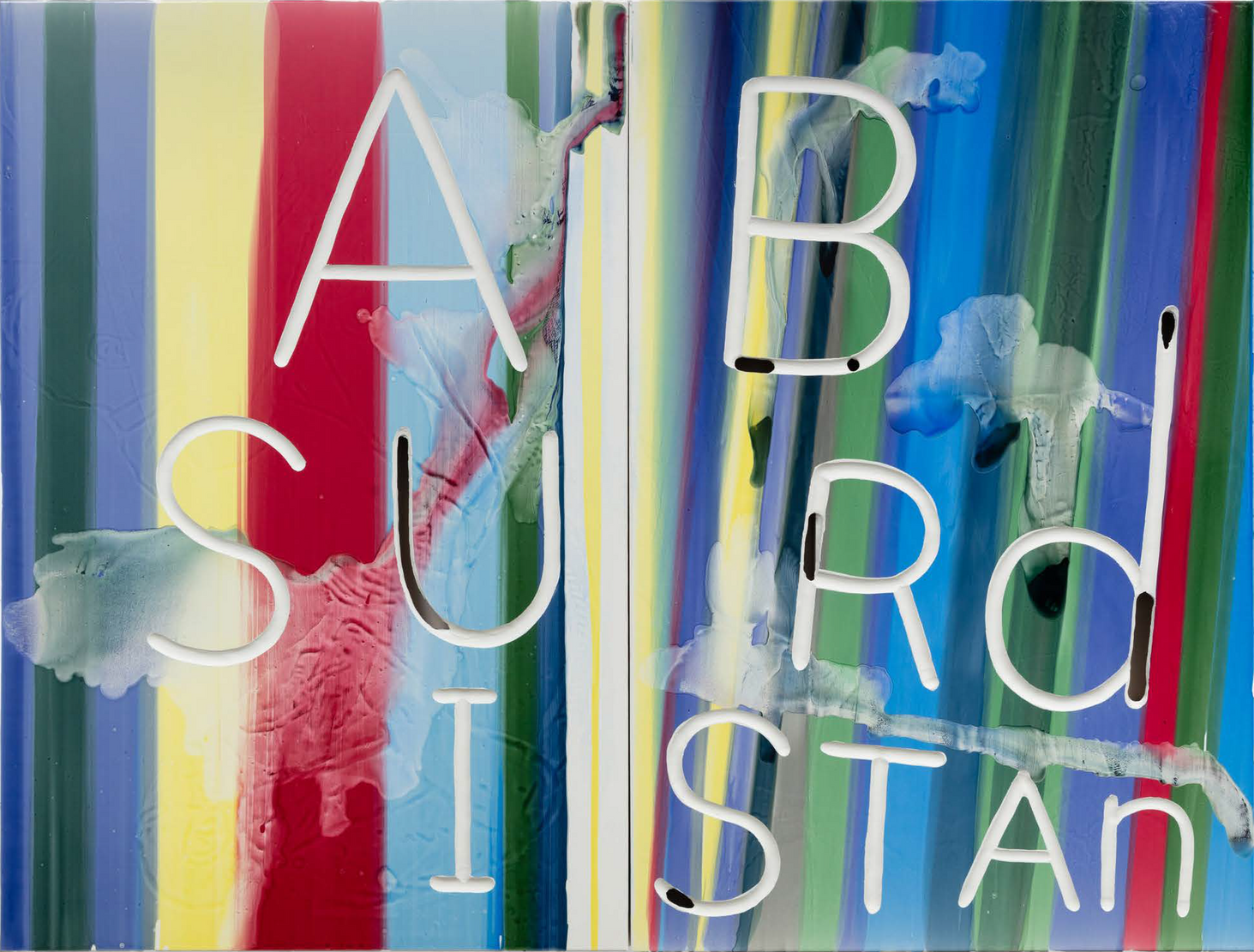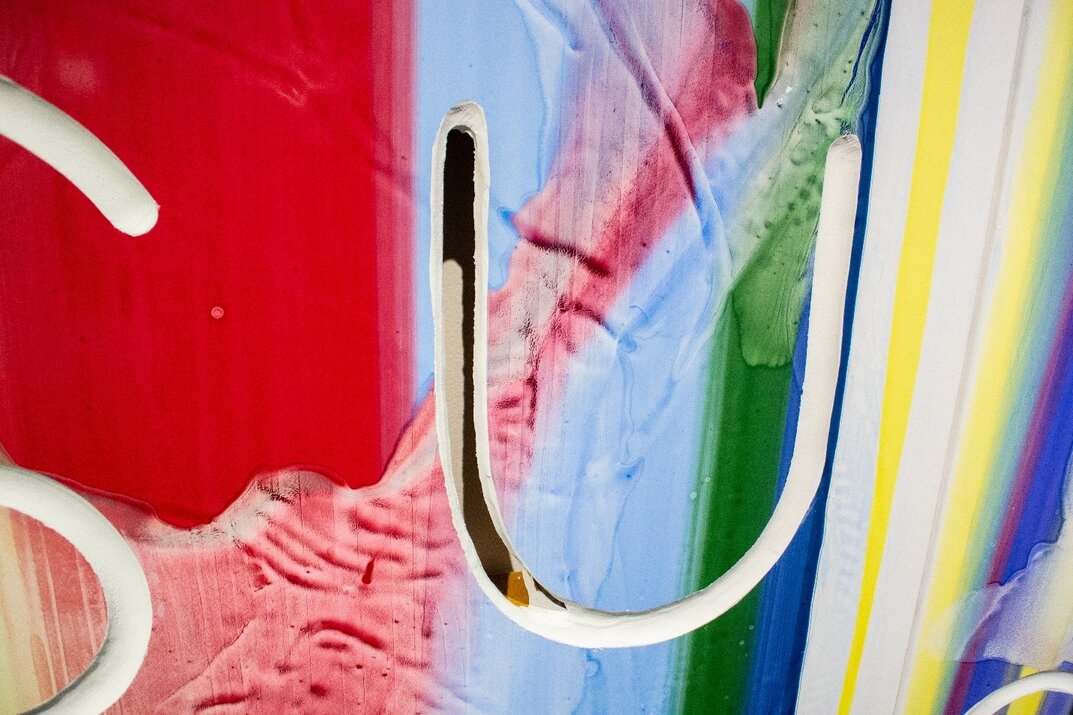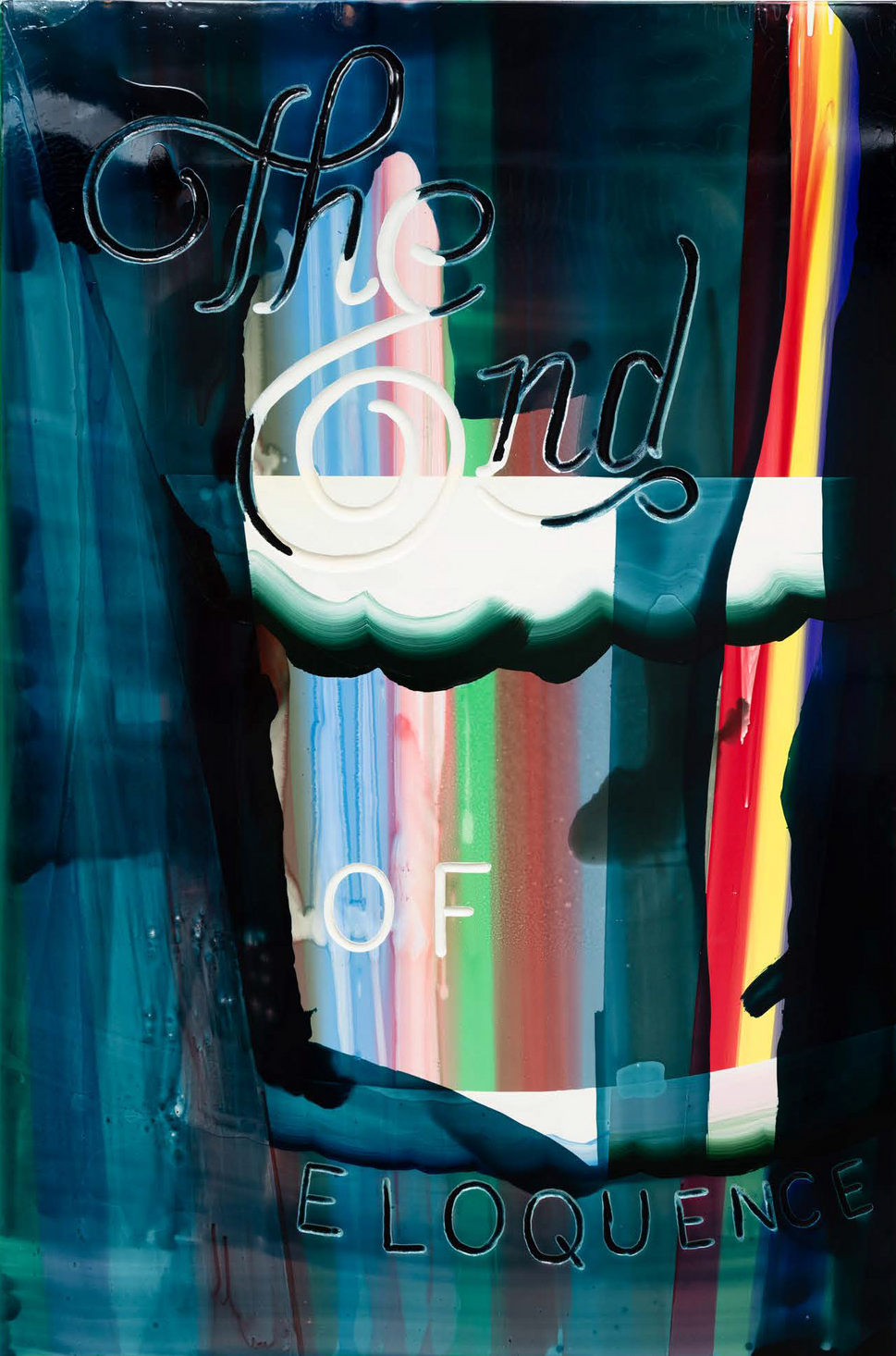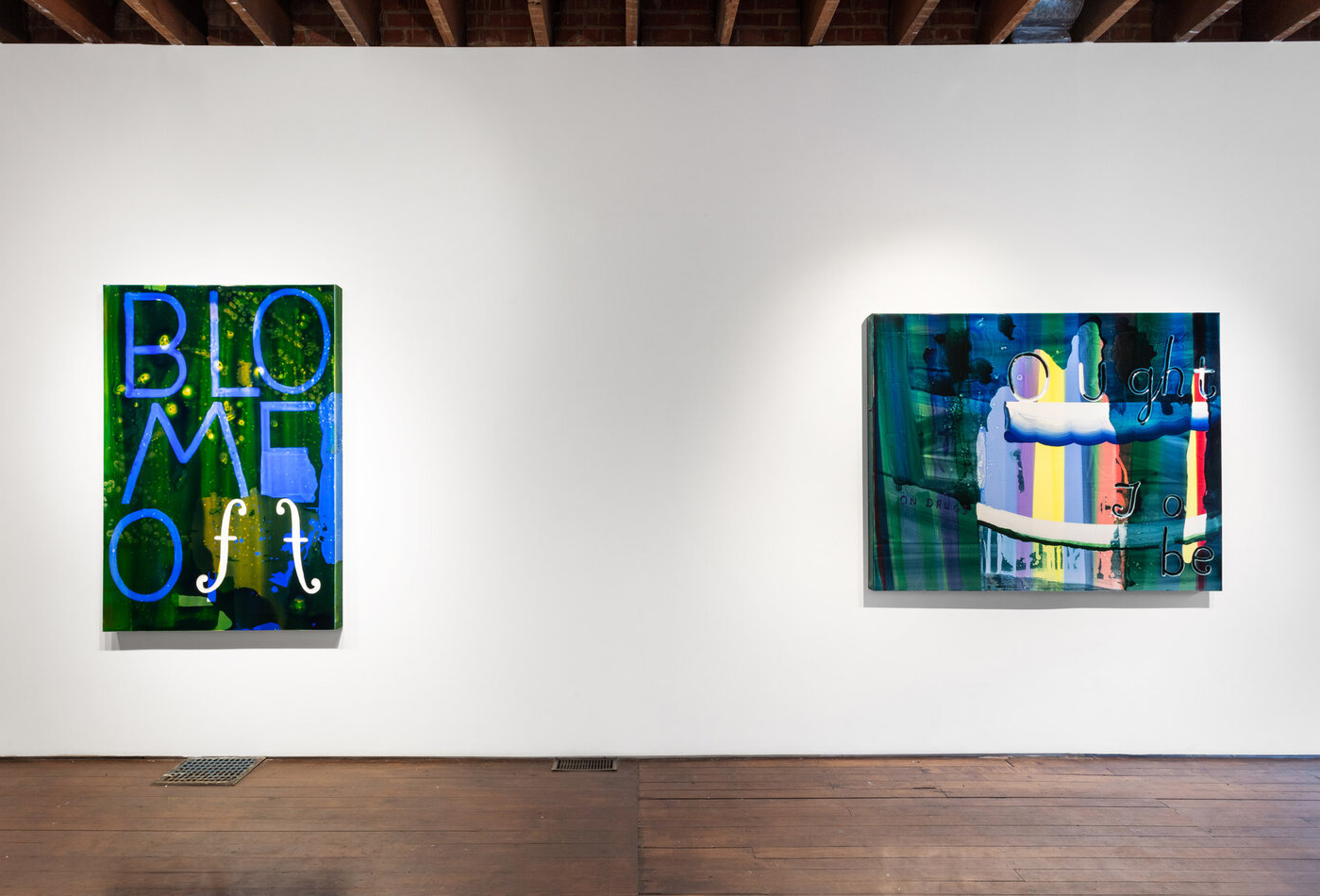Waking up, there’s a fleeting moment when the dream world is receding but still vivid: the moment just before logic is re-asserted and the internal monologue of wakefulness fully engages. Graham Gillmore’s recent paintings remind me of that peculiar half-conscious state of mind. A state of confusion but also of unlimited potential. As in an evanescing dream, the shapes and text fragments in Gillmore’s paintings invite interpretation and rebuff it at the same time. They remain enigmatic; evocative and elusive.
On first impression, the show is hedonistically colourful. As good as the catalogue photos are, they cannot capture the layered translucence and gloss of these surfaces. The colour, composition and paint handling alone would make for a beautiful show. But Gillmore is not content to leave us with pleasant, anodyne pictures. He makes things much more complicated.
Installation view of Graham Gillmore, The End of Eloquence
Gilmore’s use of text is the confounding ingredient here. Or rather it’s the text in combination with the painterly surfaces. The work won’t slot easily into any particular category. We know how to respond to conceptual, text-based work. We also know how to look at abstract art. But Gilmore does not fit neatly into either of these boxes. This is what makes the show perplexing – and engaging.
The painting Babe recounts the history of its making; how the image was built from diaphanous membranes of colour. Gillmore uses oil paint in combination with commercial varnishes to create translucent glazes which he brushes and pours across the surface. The bright blue and green areas are windows in the red glaze that expose these initial, brighter layers behind. We can read the action that resulted in the artwork.
Another trace of action is the incised word ‘Babe,’ in the lower right corner. This word is more prominent than it appears in the photo as it’s been carved into the surface with a power tool. The text is in a half cursive, half printed handwriting. The little comma after the word tells us that it’s the beginning of a message – but one we won’t get to see.
Graham Gillmore, Babe (A Love Letter), 2020, oil on panel, 54” x 48” x 2”
Absurdistan is a painting where the text is more prominent. It’s comprised of two attached panels with bright stripes of colour. On the left panel, the stripes are vertical and on right they tilt away at a slight angle. While wet, the paint has been disturbed to create ghostly organic shapes. Into the bright, slick surfaces, letters have been carved. It’s a rag-tag collection, a mixture of upper and lower cases in various sizes. It could be read as ABSURdISTAn but also A SU I B Rd STANn. To me the painting suggests that in the face of absurdity, you can still find beauty, and humour.
Graham Gillmore, Absurdistan, 2020 diptych, oil on panel, 60” x 80” x 3”
I was surprised to see that the dark areas apparent in the strokes of the letters are not paint, but holes where the router tool has cut all the way through the surface of the panel. Gillmore uses a synthetic plastic material to paint on. It is impervious to his paints and solvents and because it is bright white all the way through, his router marks automatically look bright and clean.
Graham Gillmore, Absurdistan, detail
The End of Eloquence is a tall, vertical painting. A dark glaze covers much of the surface but leaves open areas to brighter layers behind. I find myself interpreting imagery in this piece: rainbows and a cloud. Or are we looking through dark curtains to a brighter space? A cup with overflowing foam? None of these visual interpretations stick for long. The visual elements of light, dark and modeling invite interpretation but never resolve into anything definite.
The text that has been inscribed appears in three different styles. The scrolled ‘The End’ looks like the closing scene of an old movie. The ‘OF’ is simple and minimal while the ‘ELOQUENCE’ word looks like printed handwriting. It’s as though three different voices are speaking.
Graham Gillmore The End of Eloquence, 2020 oil on panel, 72” x 48” x 2”
TheEnd of Eloquenceis also the title of the exhibition. Eloquence is the clear and persuasive use of language. Eloquence is the logical expression of a particular point of view. So, what would the end of this mean? Ambiguity? Confusion? Irrationality? I think the End of Eloquence provides a glimpse back into the dream world, unfettered by the limitations of waking logic, an escape from workaday pedantic thinking.
General Hardware Contemporary have extensive photographic documentation of the show at their website, but to really get the full impact of these paintings, it is well worth a visit in person.
Installation view of Graham Gillmore, The End of Eloquence
Mikael Sandblom
Photo credit: LF Documentation or @lfdocumentation
*Exhibition information: Graham Gillmore, The End of Eloquence, September 17 – November 17, 2020, General Hardware Contemporary, Front Gallery, 1520 Queen Street West, Toronto. Gallery hours: Wed – Sat, 12 – 6 pm.

